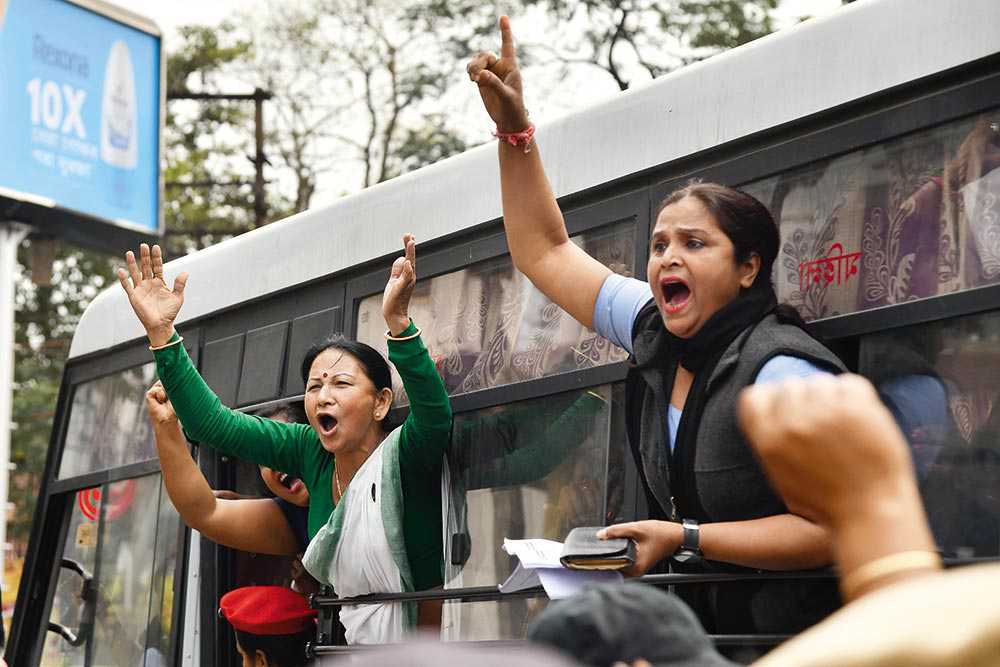Except for perfunctory condemnations by women’s groups and some social organisations, the gangrape-murder did not see much outrage in Assam, a state which has seen a staggering rise in crimes across women over the past few years. Even the involvement of juveniles without any history of delinquency and the cool calculated manner in which they acted has failed to set alarm bells ringing in the state. For a state which hits the streets more than any other part of the country, the most vocal organisations—including the All Assam Students’ Union (AASU)—appear to have sidestepped the issue.
Writer-activist Akashitora says that influential organisations like AASU have remained highly patriarchal with not a single woman in its leadership since its formation. “They must send out the right message by giving women leadership roles…Our society must shed its misogyny. Boys must be taught the meaning of consent. Is it so hard for educated parents to tell their sons not to look at women just as objects of lust?” Many others feel that easy access to pornography and drugs have also fuelled the spurt in crime against women, especially by underage boys. Activists also blame the “Delhi-obsessed” national media of failing to highlight such crime in the Northeast, which could have put pressure on states’ police to be more proactive. AASU chief advisor Samujjal Bhattacharyya, however, denies the allegations. “AASU is working on the issue (of crime against women) and also working with other women organisations,” Bhattacharyya tells Outlook.
Latest data from the National Crime Records Bureau (NCRB) show another aspect to the issue—a high number of cases under the head of “cruelty by husband/relatives”. A senior official of the state CID says there is a need to go deeper into the components of what constitutes violence against women. “In Assam, around 50 per cent of the cases comprise of cruelty by husband. This is not to say that these cases are fake, but many a time these cases are not followed up by the complainant or resolved or withdrawn and police have little role,” this official adds.

Activists, however, say that such simplification of crime against women only goes to trivialise the issue. A lawyer, who works on gender issues and does not want to be identified, says that “police attribute the large number of cases to the fact that more complaints are lodged by victims nowadays”. What does that mean? She asks. “Crimes are happening, conviction rate is low…serial offenders are naturally emboldened. Policing must be visible. A couple of years ago, at least two women were raped and murdered on trains in separate incidents. This lack of security in public transport is a serious issue,” she says.
Assam Police director general Bhaskar Jyoti Mahanta attributes the rising number of crime to multiple reasons. “One is overexposure to perverse media content, two, the breakdown in social mores, the traditional value systems and thirdly, women are becoming more aware and assertive and reporting such cases,” Mahanta says. He adds that officials involved in POCSO cases have been trained and sensitised to deal with the minor survivors. Besides, police are also partnering with civil society groups, domain and legal experts to tackle crime and ensuring prosecution.
Others point to social issues. Like Anurita P. Hazarika of the North East Network, a organisation working on gender equality and safety. She says Assam’s rate of violence against women stands out in comparison to other states in the region for a variety of reasons, including how Assamese society is composed of communities which have emerged out of tribal and caste backgrounds. In Nagaland and Meghalaya, for example, the communities are mostly tribal.
“The caste strictures are followed rigidly and the onus of following them is mostly on women. When they don’t follow them, violence is used as a means to control them.” However, it does not explain the fact that the nine boys accused of gang rape are from the Mishing tribe. All have sent to an observation home. Police, however, say ‘only’ three of them raped the minor.
发表回复